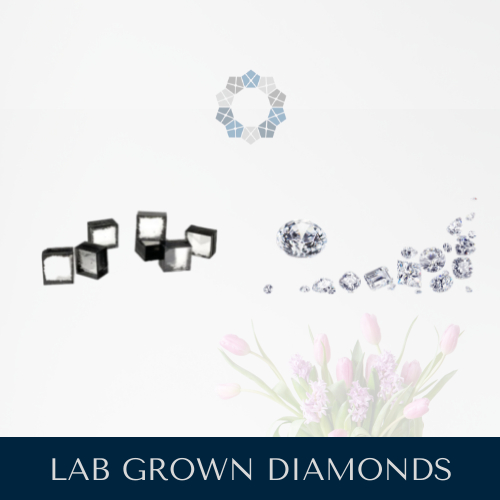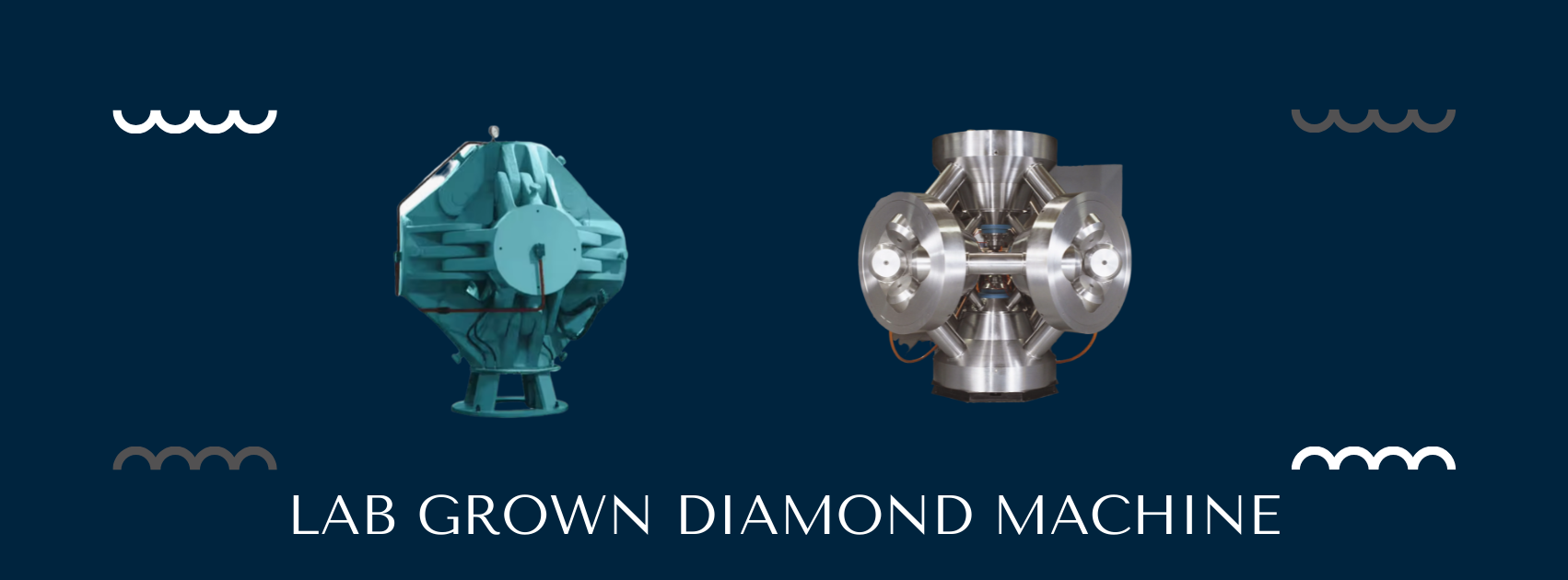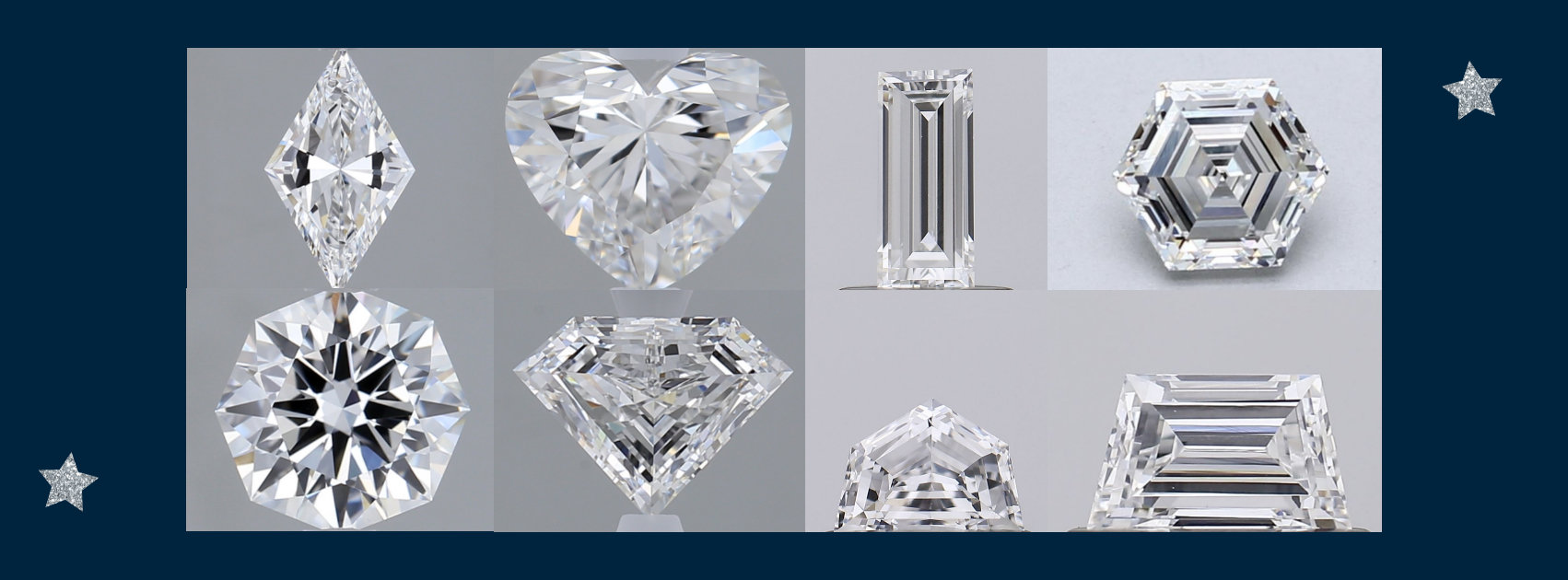The Rise of Lab-Grown Diamonds: Understanding the Future of Sustainable Luxury with the increasing demand for sustainable and ethical practices in the luxury industry, lab-grown diamonds have emerged as a compelling alternative to traditional mined diamonds. These man-made gems offer consumers a more environmentally friendly and socially responsible option, without compromising on quality or beauty. In this post, we will explore the world of lab-grown diamonds, delving into their production process, characteristics, and the benefits they offer.
Lab Grown Diamonds
Lab-grown diamonds are created using advanced technological processes that mimic the natural conditions under which diamonds form in the earth's mantle. By replicating these conditions in a controlled laboratory setting, scientists are able to produce diamonds that are chemically, physically, and optically identical to mined diamonds.

Lab-grown diamonds, also known as CVD diamonds, are a revolutionary innovation in the jewelry industry. These diamonds are created through advanced technological processes that replicate the natural conditions under which diamonds form in the earth's mantle. By subjecting carbon atoms to high pressure and temperature in a controlled laboratory setting, scientists are able to produce diamonds that are chemically, physically, and optically identical to mined diamonds.
The production process involves cutting-edge techniques such as chemical vapor deposition (CVD) and high-pressure high-temperature (HPHT) methods, resulting in the formation of stunning, high-quality diamonds. One of the key advantages of lab-grown diamonds is their eco-friendly nature, as they do not involve the environmental impact associated with traditional diamond mining. Additionally, these diamonds are ethically sourced, free from the controversies surrounding labor practices and conflict zones.

Chemical Vapor Deposition process for growing diamonds
Utilizing the chemical vapor deposition (CVD) process to grow diamonds is a fascinating and intricate endeavor that epitomizes the marriage of cutting-edge technology with natural beauty. This innovative method involves the introduction of carbon-rich gases into a chamber, where they are ignited to generate a plasma state. Within this plasma, carbon atoms are stimulated to form layers upon layers, gradually crystallizing into diamond structures. The controlled environment allows for the precise manipulation of growth conditions, resulting in the creation of high-quality diamonds with exceptional purity and brilliance. The CVD process has revolutionized the diamond industry, offering a sustainable and environmentally conscious alternative to traditional mining practices. By harnessing the power of science and technology, this method has paved the way for a new era of luxury, where ethical sourcing and ecological responsibility are paramount. As consumers increasingly seek products that align with their values, the CVD process stands as a beacon of progress in the realm of sustainable luxury, shaping a future where beauty and conscience coexist harmoniously.

HPHT method for growing diamonds
The high-pressure high-temperature (HPHT) method for growing diamonds is a remarkable feat of scientific ingenuity that has revolutionized the diamond industry. This advanced technique involves subjecting carbon to extreme pressure and temperature conditions similar to those found in the earth's mantle, where natural diamonds are formed over millions of years. By recreating these conditions in a controlled laboratory environment, scientists can induce the growth of diamonds with exceptional purity and brilliance. The HPHT method allows for precise manipulation of the growth process, resulting in diamonds that are chemically, physically, and optically identical to those sourced from traditional mining practices. This method has not only opened new horizons for sustainable luxury but has also addressed the environmental and ethical concerns associated with diamond mining. As the demand for ethically sourced and environmentally conscious products continues to rise, the HPHT method stands as a beacon of progress in the realm of luxury, offering consumers a more responsible and sustainable option without compromising on quality or beauty. Through the application of cutting-edge technology, the HPHT method has paved the way for a future where ethical sourcing and ecological responsibility are integral to the world of luxury goods, aligning with the values and preferences of discerning consumers.
Furthermore, lab-grown diamonds offer consumers a more affordable option without compromising on the brilliance and beauty that diamonds are renowned for. As the demand for sustainable luxury continues to rise, the future of lab-grown diamonds looks promising, offering a compelling alternative for conscientious consumers.
How are lab-grown diamonds produced?
The production of lab-grown diamonds begins with a tiny seed crystal, which is placed in a high-pressure, high-temperature (HPHT) or chemical vapor deposition (CVD) chamber. In the HPHT method, carbon is subjected to extreme pressure and heat to form a diamond, while in the CVD method, a carbon-rich gas is used to deposit layers of diamond onto the seed crystal. Both methods result in the growth of a diamond over a period of several weeks.

The production of lab-grown diamonds is a complex and intricate process that involves cutting-edge technology and scientific innovation. These man-made gems are created through advanced techniques such as chemical vapor deposition (CVD) and high-pressure high-temperature (HPHT) methods, which replicate the natural conditions under which diamonds form in the earth's mantle. In the CVD process, carbon-rich gases are introduced into a chamber and ignited to generate a plasma state, stimulating carbon atoms to form layers upon layers, gradually crystallizing into diamond structures. On the other hand, the HPHT method involves subjecting carbon to extreme pressure and temperature conditions similar to those found in the earth's mantle, inducing the growth of diamonds with exceptional purity and brilliance. Both methods result in the formation of high-quality diamonds over a period of several weeks, offering consumers a sustainable and environmentally conscious alternative to traditional mining practices.
What are the characteristics of lab-grown diamonds?
Lab-grown diamonds exhibit the same physical, chemical, and optical properties as natural diamonds. They possess the hardness, brilliance, and fire that are characteristic of diamonds, and are graded using the same standards as mined diamonds. Additionally, lab-grown diamonds are available in a wide range of shapes, sizes, and colors, offering consumers a versatile array of options.
The characteristics of lab-grown diamonds are a testament to the remarkable precision and beauty that can be achieved through advanced technological processes. These man-made gems possess the same physical, chemical, and optical properties as natural diamonds, showcasing the hardness, brilliance, and fire that are synonymous with the allure of traditional mined diamonds. Graded using the same stringent standards as their natural counterparts, lab-grown diamonds offer consumers a diverse array of options, available in a wide range of shapes, sizes, and colors. From classic round cuts to more unique shapes, these diamonds cater to the discerning tastes of individuals seeking sustainable luxury without compromising on elegance and allure.
What are the benefits of choosing lab-grown diamonds?
One of the primary benefits of lab-grown diamonds is their ethical and environmental sustainability. Unlike mined diamonds, which often involve destructive mining practices and labor exploitation, lab-grown diamonds have a significantly lower environmental impact and are produced under strict ethical guidelines. Additionally, lab-grown diamonds are typically more affordable than their mined counterparts, making them an attractive option for budget-conscious consumers.
When considering the advantages of lab-grown diamonds, it becomes evident that they offer a multitude of benefits for consumers seeking ethical and environmentally sustainable alternatives. The process of growing diamonds in controlled laboratory settings using advanced techniques like chemical vapor deposition (CVD) and high-pressure high-temperature (HPHT) methods has revolutionized the traditional diamond industry.
These man-made gems exhibit the same physical, chemical, and optical properties as natural diamonds, showcasing the hardness, brilliance, and fire that are synonymous with the allure of traditional mined diamonds.

Additionally, lab-grown diamonds are available in a wide range of shapes, sizes, and colors, providing consumers with a versatile array of options. One of the primary advantages of choosing lab-grown diamonds is their ethical and environmental sustainability, offering a compelling alternative for conscientious consumers who prioritize eco-friendly and socially responsible options.
In conclusion, the emergence of lab-grown diamonds represents a significant advancement in the jewelry industry, offering a sustainable and socially responsible alternative to traditional mined diamonds. As consumers become increasingly conscious of the impact of their purchasing decisions, the demand for lab-grown diamonds is expected to continue to rise, driving further innovation and accessibility in the market. Whether for engagement rings, jewelry, or investment purposes, lab-grown diamonds provide a compelling option for those seeking beauty, quality, and sustainability in their luxury purchases.
We have started lab grown diamond jewelry brand called " ashnihi " Explore our various designer jewelry collection and shop them online.


